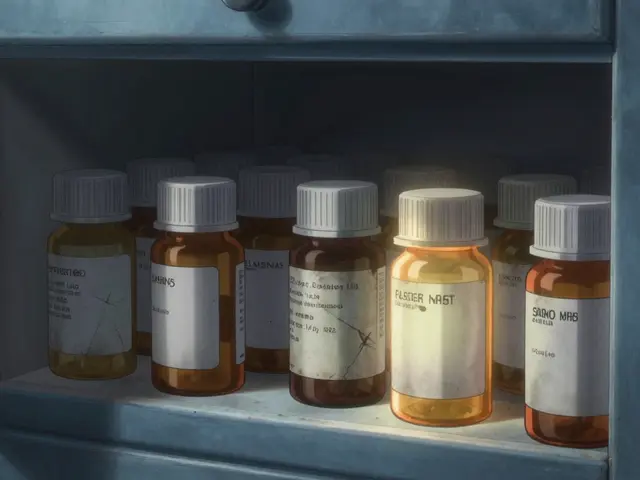Hypophosphatemia: What It Is and How to Deal With It
Ever had a blood test that showed low phosphate and wondered what that means? That condition is called hypophosphatemia. Phosphate is a mineral that helps your bones stay strong, your cells make energy, and your kidneys work right. When levels drop too low, you can feel tired, weak, or have other puzzling symptoms.
What Is Hypophosphatemia?
Hypophosphatemia occurs when the amount of phosphate in your blood falls below the normal range (usually under 2.5 mg/dL for adults). It can show up suddenly or develop over weeks. The cause can be anything that lowers intake, increases loss, or shifts phosphate into cells. Common triggers include poor nutrition, certain medicines, heavy alcohol use, and medical problems that affect the kidneys or intestines.
Typical Signs and Symptoms
Low phosphate can be sneaky. Some people notice muscle cramps, weakness, or trouble walking. Others feel a vague fatigue that doesn’t go away with rest. In more severe cases, you might see confusion, rapid breathing, or a heart that beats irregularly. Because these signs overlap with many other issues, a blood test is the only reliable way to confirm hypophosphatemia.
Kids and pregnant women are especially vulnerable. Growing bodies need extra phosphate for bone development, and a shortage can slow growth or cause rickets. If you suspect low phosphate in a child, get a doctor’s help right away.
Many medications can tip the balance. Diuretics, antacids that bind phosphate, and some chemotherapy drugs can push phosphate out of the bloodstream. If you’re on any of these meds, ask your pharmacist or doctor if you need regular phosphate checks.
Diet also matters. Foods rich in phosphate include dairy, meat, nuts, and beans. If you’re on a low‑phosphate diet for kidney disease, your doctor will guide you on how much is safe. Cutting out too many phosphate sources without medical advice can lead to deficiency.
When doctors diagnose hypophosphatemia, they look at the cause first. If it’s due to a medication, they might adjust the dose or switch drugs. For nutritional deficiencies, the treatment is usually oral phosphate supplements or a diet boost. Severe cases may need intravenous phosphate in a hospital setting.
Here’s a quick checklist for managing low phosphate:
- Get a blood test to confirm levels.
- Identify any medicines or conditions that could be draining phosphate.
- Increase intake of phosphate‑rich foods unless advised otherwise.
- Take prescribed supplements exactly as directed.
- Follow up with your healthcare provider to monitor progress.
Keeping an eye on your overall health helps prevent the problem from coming back. Stay hydrated, limit excessive alcohol, and maintain a balanced diet. If you notice any new muscle weakness or fatigue, don’t ignore it—early detection makes treatment easier.
Remember, hypophosphatemia is manageable. With the right information and a proactive approach, you can restore your phosphate levels and feel back to normal. If you have questions or need personalized advice, reach out to a healthcare professional who can guide you based on your specific situation.

Why Low Phosphate Causes Muscle Weakness: A Clear Guide to Hypophosphatemia
- Date: 22 Sep 2025
- Categories:
- Author: David Griffiths
Discover how hypophosphatemia leads to muscle weakness, its common causes, diagnosis, and effective management strategies in a concise, human‑focused guide.




